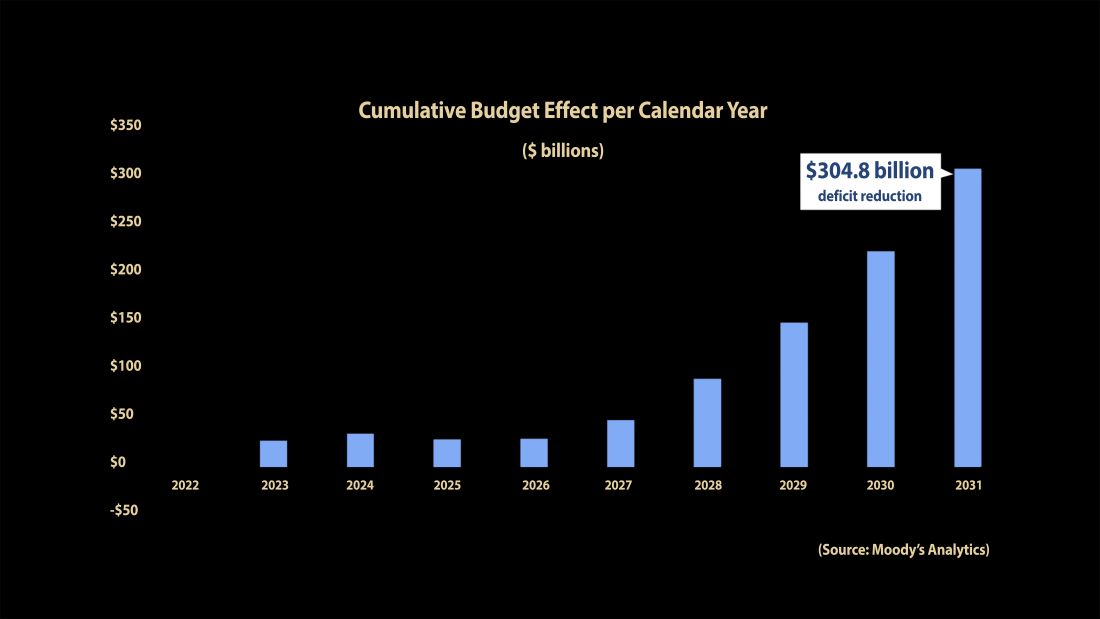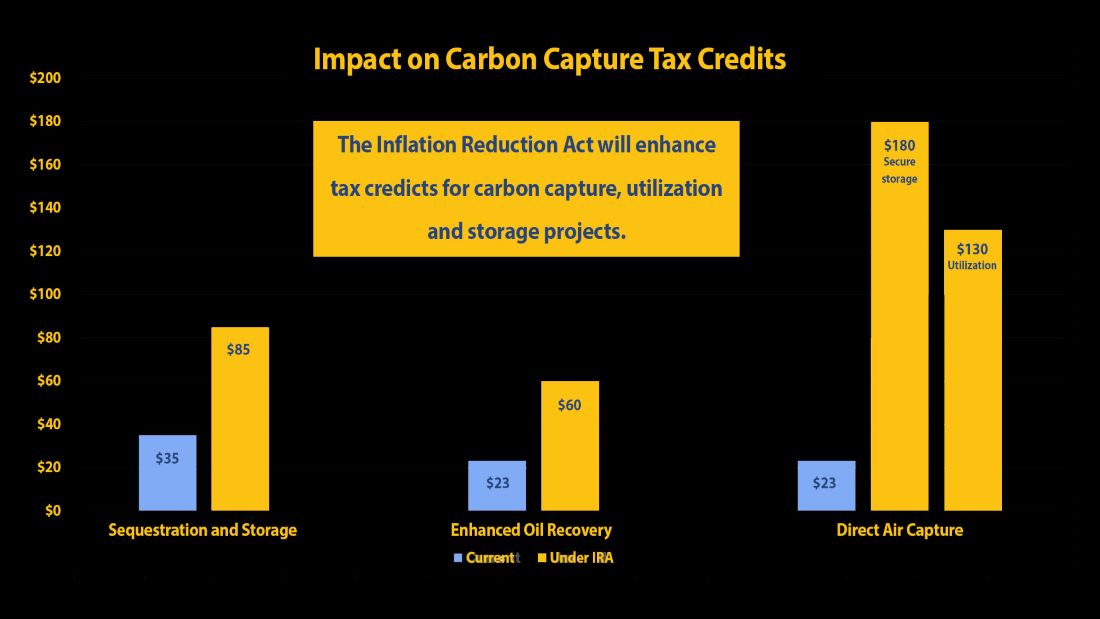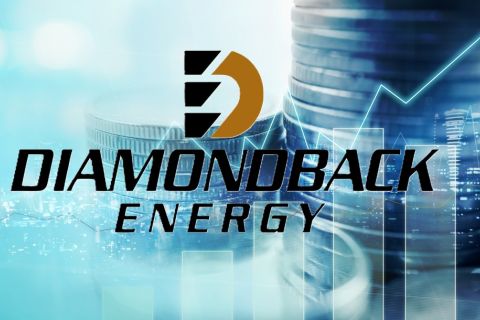The Inflation Reduction Act of 2022 that is expected to be signed by President Joe Biden is designed to accomplish a number of policy goals, many of them directly affecting the oil and gas industry both in terms of near- and long-term strategies.
Name aside, the act’s ability to reduce inflation in any meaningful way is in doubt, according to the Penn Wharton Budget Model. Consider the title to be a marketing tool. However, the law is serious about deficit reduction.
RELATED
Opinion: The Good, The Bad, The Climate Bill
The Moody’s Analytics estimate of cumulative deficit reduction through 2031, based on data from the Congressional Budget Office and the Joint Committee on Taxation, shows a total impact of about $300 billion.

Wharton’s estimate is a bit more conservative. Its forecast is a reduction of $264 billion over 10 years, but it also estimates a reduction in government debt of 0.9% in 2031, 4.1% in 2040 and 8% in 2050.
But that’s just one aspect. The biggest ramifications for oil and gas involve the extensive climate change component. Here, the news is a combination of good and bad.
First, the good

Offshore lease sales in Cook Inlet, Alaska, and the Gulf of Mexico – hung up in the courts and the bureaucracy – will go forward. So will construction of the Mountain Valley Pipeline, a 300-mile natural gas pipe in West Virginia and Virginia that has been hung up in the courts.
RELATED:
Key Oil and Gas Funding Mechanism Spared in Landmark ‘Clean Energy’ Bill
The deal between Sens. Chuck Schumer (D-N.Y.) and Joe Manchin (D-W.Va.) involves a bill coming up in September that will pass judgement of the 2 Bcf/d pipe to the U.S. Court of Appeals for the D.C. Circuit.
What else? Most of the $370 billion in investments is aimed at encouraging clean energy and reducing carbon emissions.

Specifically, the act significantly enhances credits to carbon capture, utilization and storage projects. The credit for sequestration and storage will jump from $35 a ton to $85 a ton. EOR, now at $23 a ton, will be $60 a ton. And the direct air capture credit will jump from $23 a ton to $180 for secure storage and $130 for utilization.
Accelerating the development of hydrogen as a widely used energy source is a key part of the legislation – but not just green hydrogen, which is hydrogen produced by wind or solar energy.
Producing blue hydrogen with natural gas could qualify for a credit from 60 cents to a dollar per kilogram.
Not all good
Sure, there is a lot not to like. Royalty rates will rise with the Inflation Reduction Act and methane leaks will cost you. Corporate taxes on billion-dollar companies will increase a minimum 15% and a 1% excise tax has been added to stock buybacks.

But take the good with the bad. We’re in an energy transition away from fossil fuels. That’s not going to change. And as Ryan Lance, CEO of ConocoPhillips, said:
“At least the agreement recognizes that natural gas and oil are an important part of the energy transition and are going to be here for decades. So that’s a positive."
Recommended Reading
Petrie Partners: A Small Wonder
2024-02-01 - Petrie Partners may not be the biggest or flashiest investment bank on the block, but after over two decades, its executives have been around the block more than most.
CEO: Coterra ‘Deeply Curious’ on M&A Amid E&P Consolidation Wave
2024-02-26 - Coterra Energy has yet to get in on the large-scale M&A wave sweeping across the Lower 48—but CEO Tom Jorden said Coterra is keeping an eye on acquisition opportunities.
Endeavor Integration Brings Capital Efficiency, Durability to Diamondback
2024-02-22 - The combined Diamondback-Endeavor deal is expected to realize $3 billion in synergies and have 12 years of sub-$40/bbl breakeven inventory.
Exxon, Chevron Tapping Permian for Output Growth in ‘24
2024-02-02 - Exxon Mobil and Chevron plan to tap West Texas and New Mexico for oil and gas production growth in 2024, the U.S. majors reported in their latest earnings.
Patterson-UTI Braces for Activity ‘Pause’ After E&P Consolidations
2024-02-19 - Patterson-UTI saw net income rebound from 2022 and CEO Andy Hendricks says the company is well positioned following a wave of E&P consolidations that may slow activity.






